Preparations for the inaugural flight of space shuttle Columbia passed a major milestone at NASA’s Kennedy Space Center on Dec. 29, 1980, with the rollout of the vehicle stack from the Vehicle Assembly Building (VAB) to its seaside Launch Pad 39A. The prime crew for STS-1, John W. Young and Robert L. Crippen, and their backups Joe H. Engle and Richard H. Truly, had carried out complex interface tests to verify mechanical and electrical connections of the mated vehicle while still in the VAB. A few days after observing the rollout, the astronauts participated in emergency egress drills and rehearsed procedures to quickly evacuate Columbia. Senior NASA managers remained optimistic that the initial flight could take place as early as March 1981.
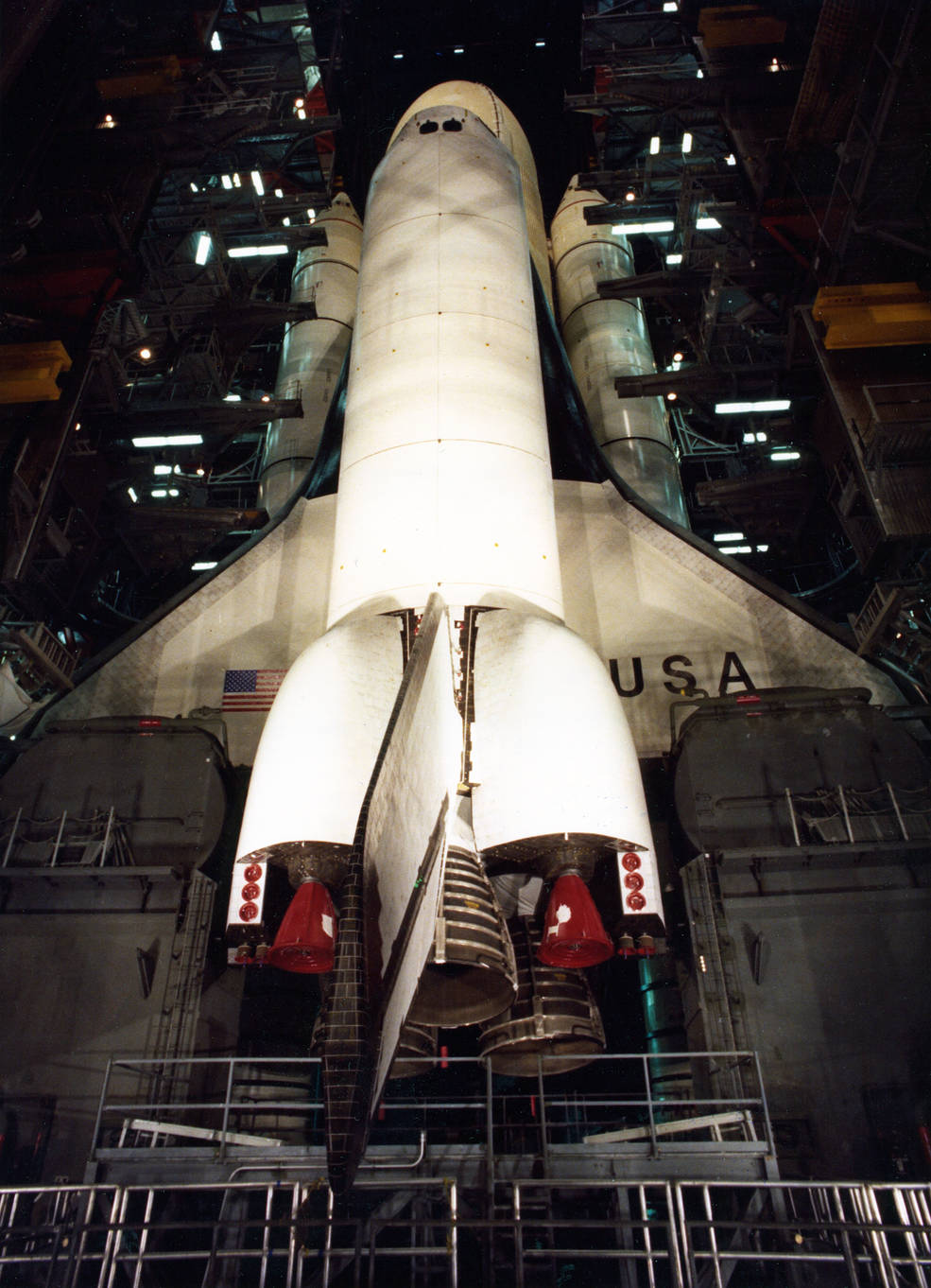
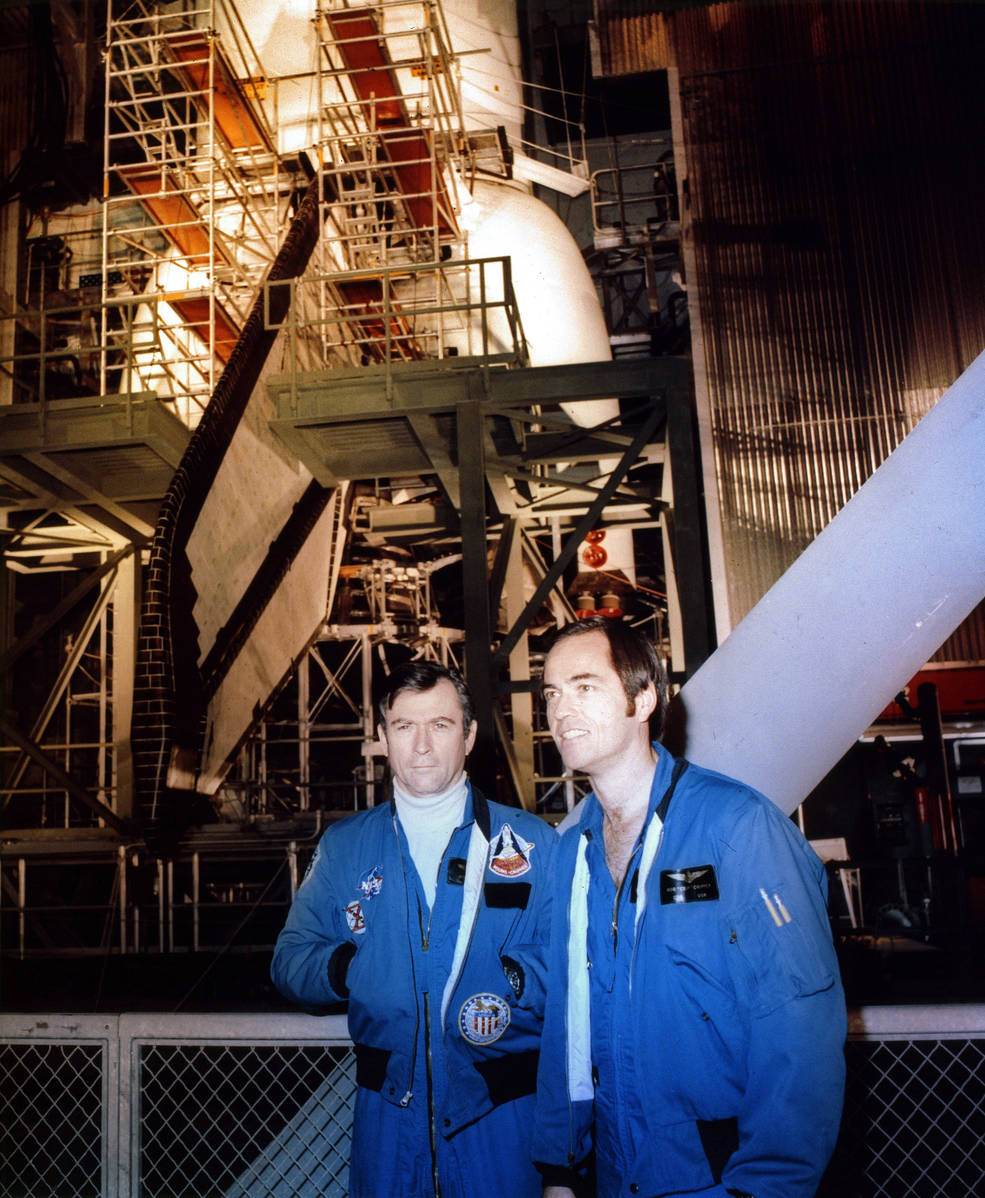
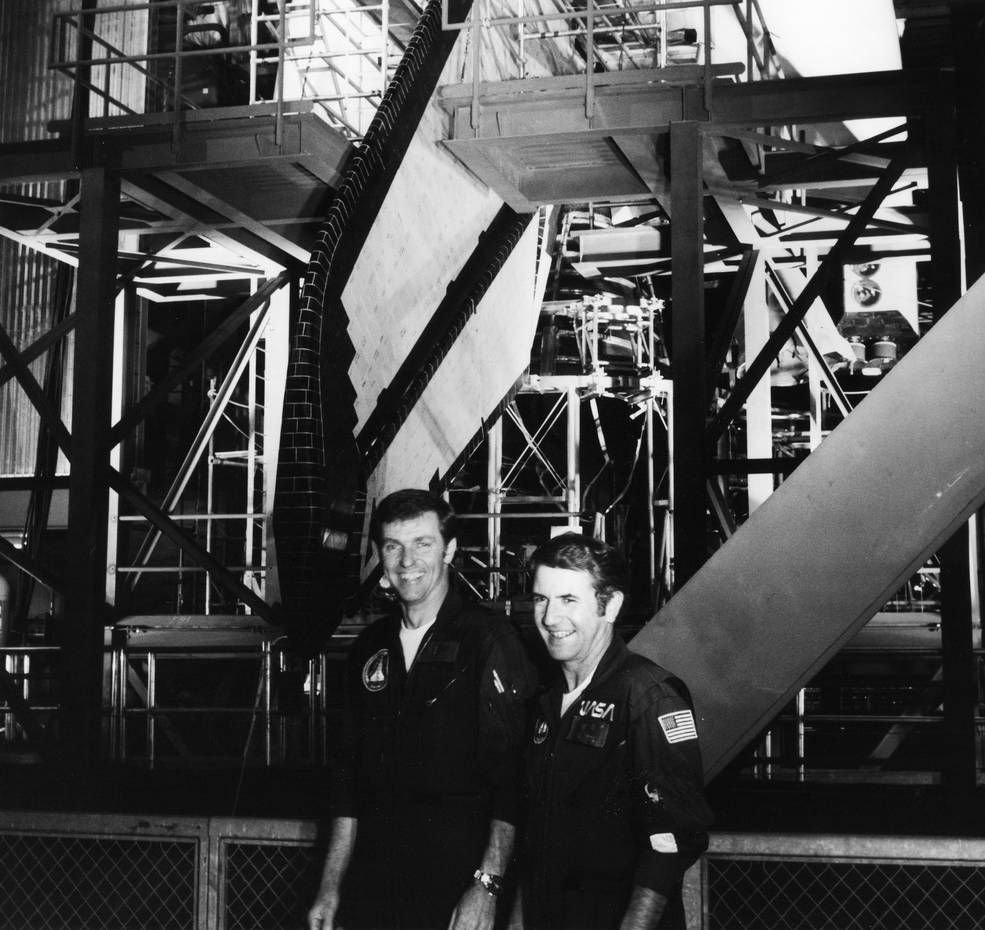
Left: Space shuttle Columbia on its Mobile Launch Platform inside the Vehicle Assembly Building (VAB) at NASA’s Kennedy Space Center. Middle: STS-1 astronauts John W. Young, left, and Robert L. Crippen pose in front of Columbia in the VAB. Right: STS-1 backup crew of Joe H. Engle, left, and Richard H. Truly pose in front of Columbia in the VAB.
Following the Nov. 26, 1980, mating of Columbia with its external tank and solid rocket boosters on the Mobile Launch Platform (MLP), the prime and backup crews carried out complex interface tests to verify mechanical and electrical connections of the mated vehicle. Engineers powered up the entire stack for the first time on Dec. 4. The interface tests involved the astronauts, strapped into Columbia’s cockpit in its vertical orientation, flying simulated launch, abort, and reentry profiles using the orbiter’s five general-purpose computers. The vehicle was connected to KSC’s launch control system and flight controllers at the Mission Control Center at the agency’s Johnson Space Center in Houston also received the data during the tests.
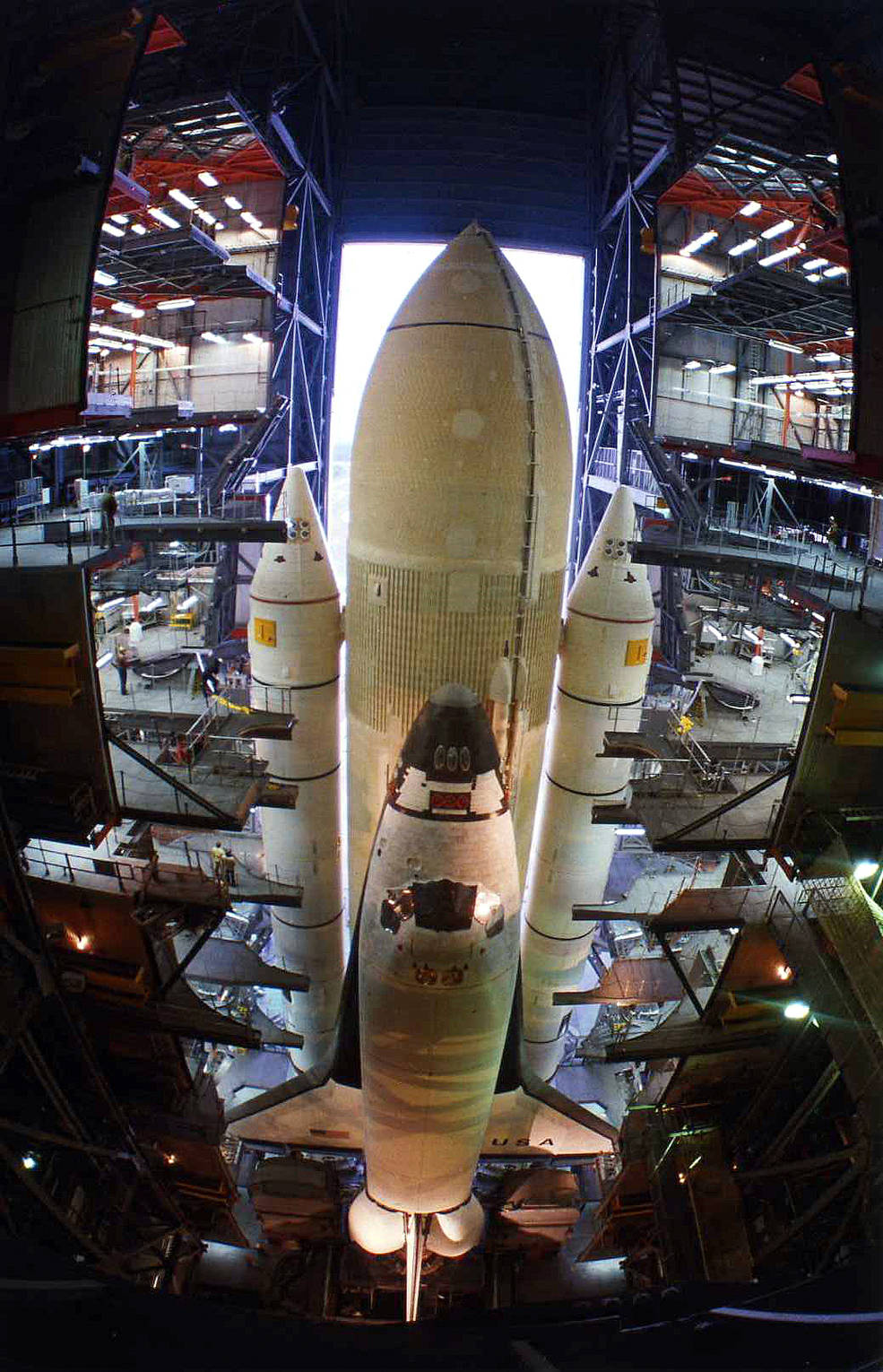
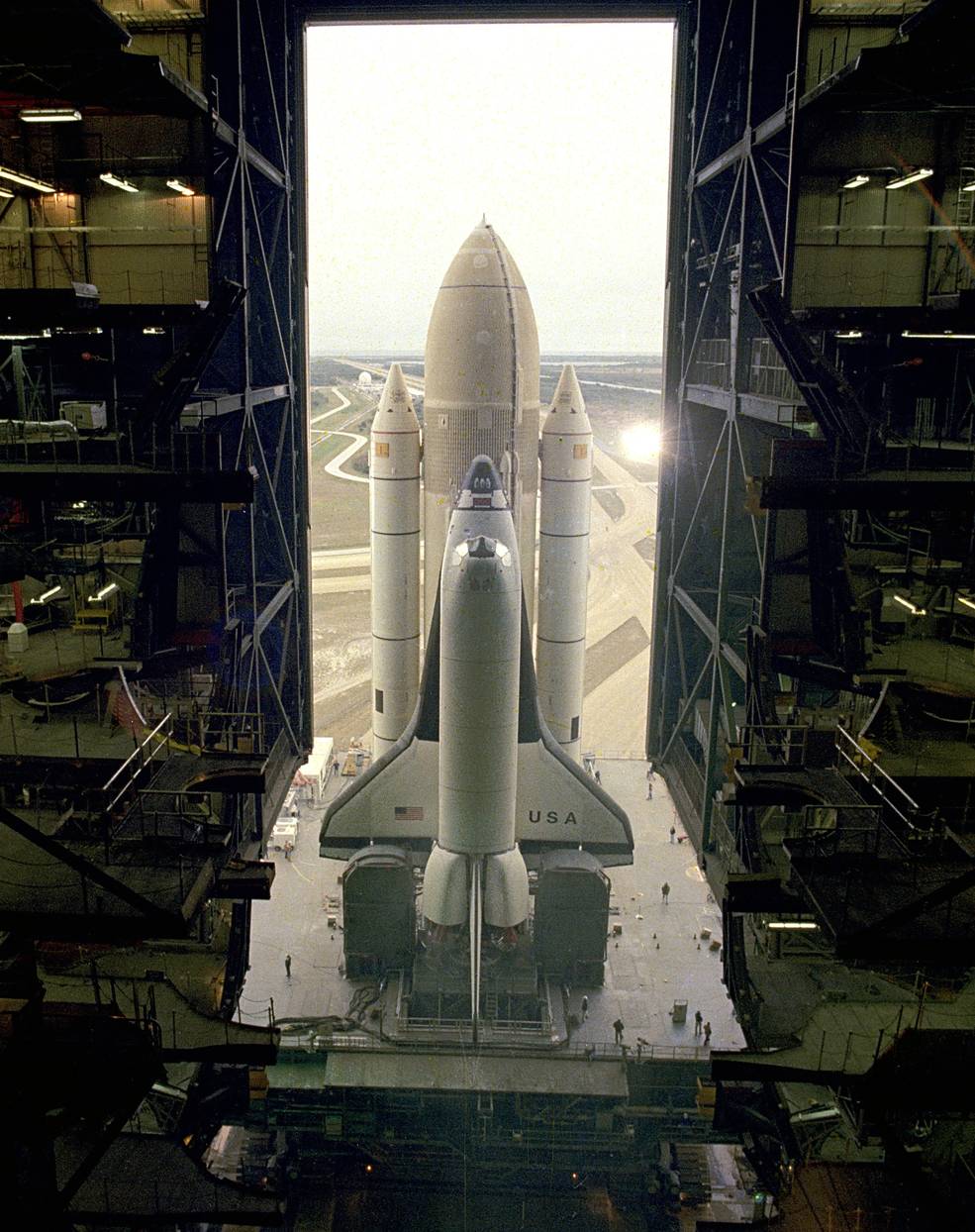
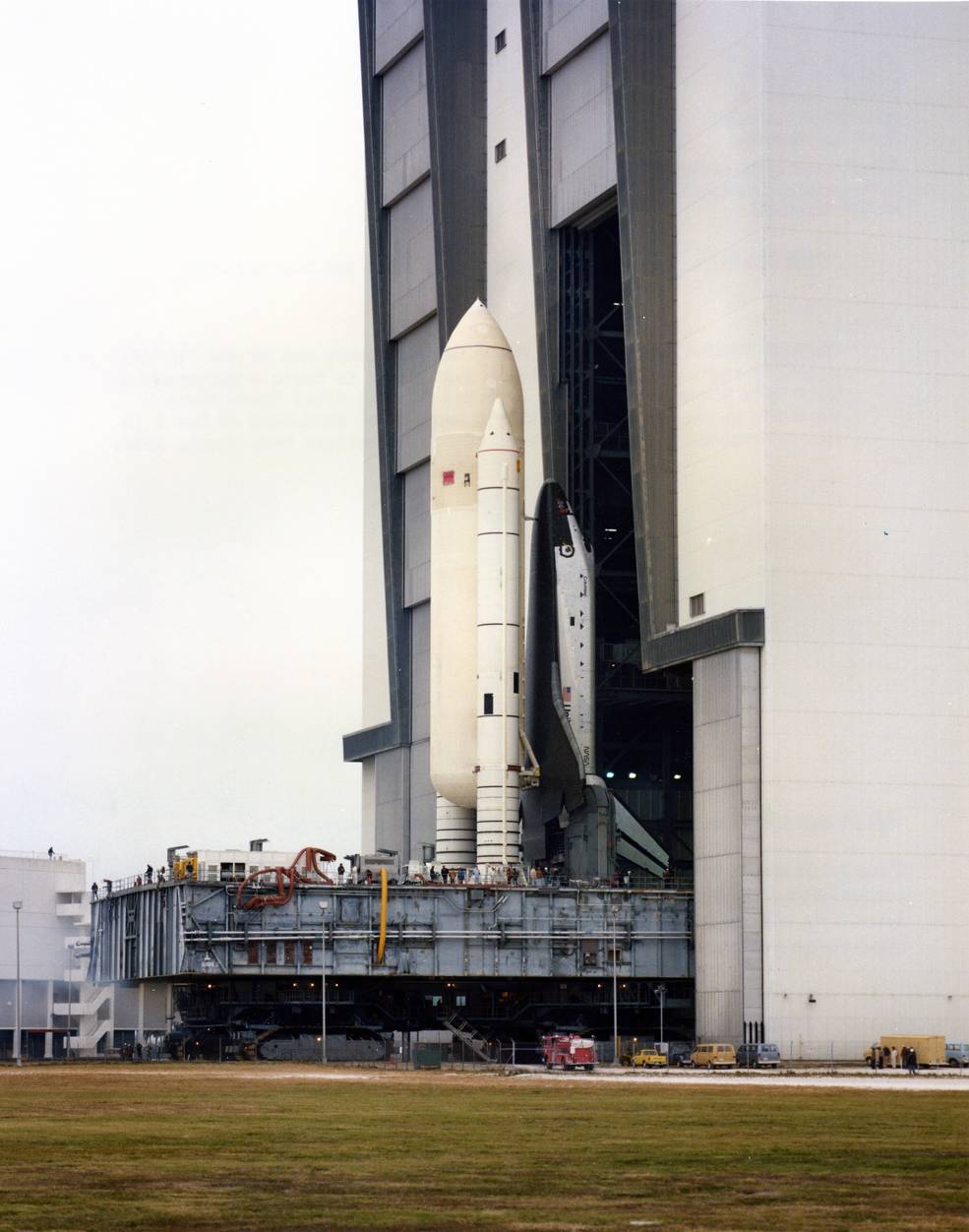
Left: In the Vehicle Assembly Building (VAB) at NASA’s Kennedy Space Center, workers retract the work platforms away from the space shuttle Columbia stack prior to rollout.
Middle: Columbia begins the rollout from the VAB to Launch Pad 39A.
Right: View of Columbia as the stack exits the VAB.
At 8 a.m. on Dec. 29, Columbia began its slow rollout from the VAB, the stack and MLP riding atop the Mobile Transporter, also known as the crawler. Young, Crippen and KSC Director Richard G. “Dick” Smith addressed the 5,000 visitors, including 200 reporters from around the world, assembled to view the rollout. Young expressed what a great event the rollout represented for the United States, and Crippen called the space shuttle “a technological marvel.” Columbia arrived at Launch Pad 39A by mid-afternoon, completing the 3.5-mile journey down the crawlerway without incident. By that evening, workers secured the stack to the pad.
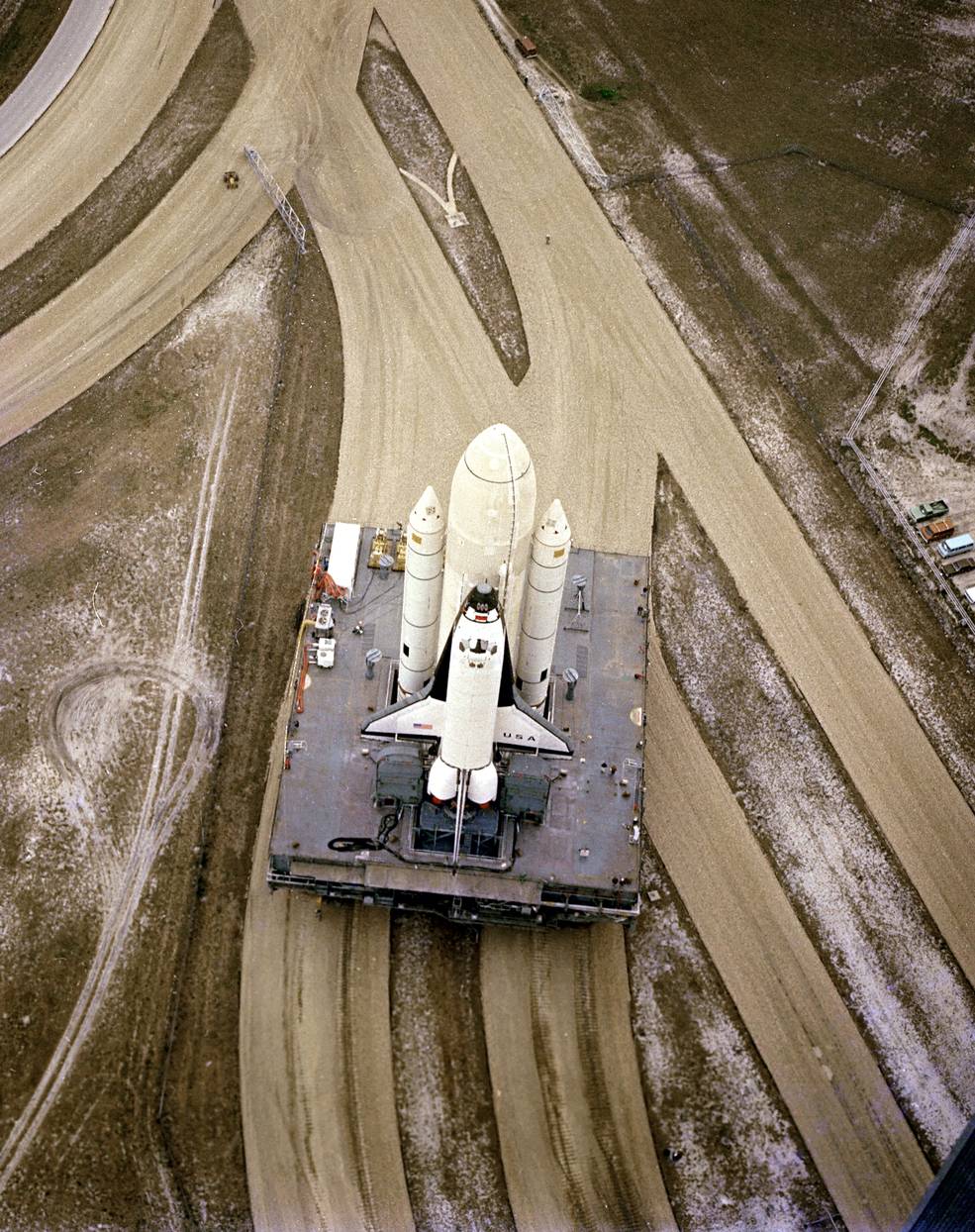
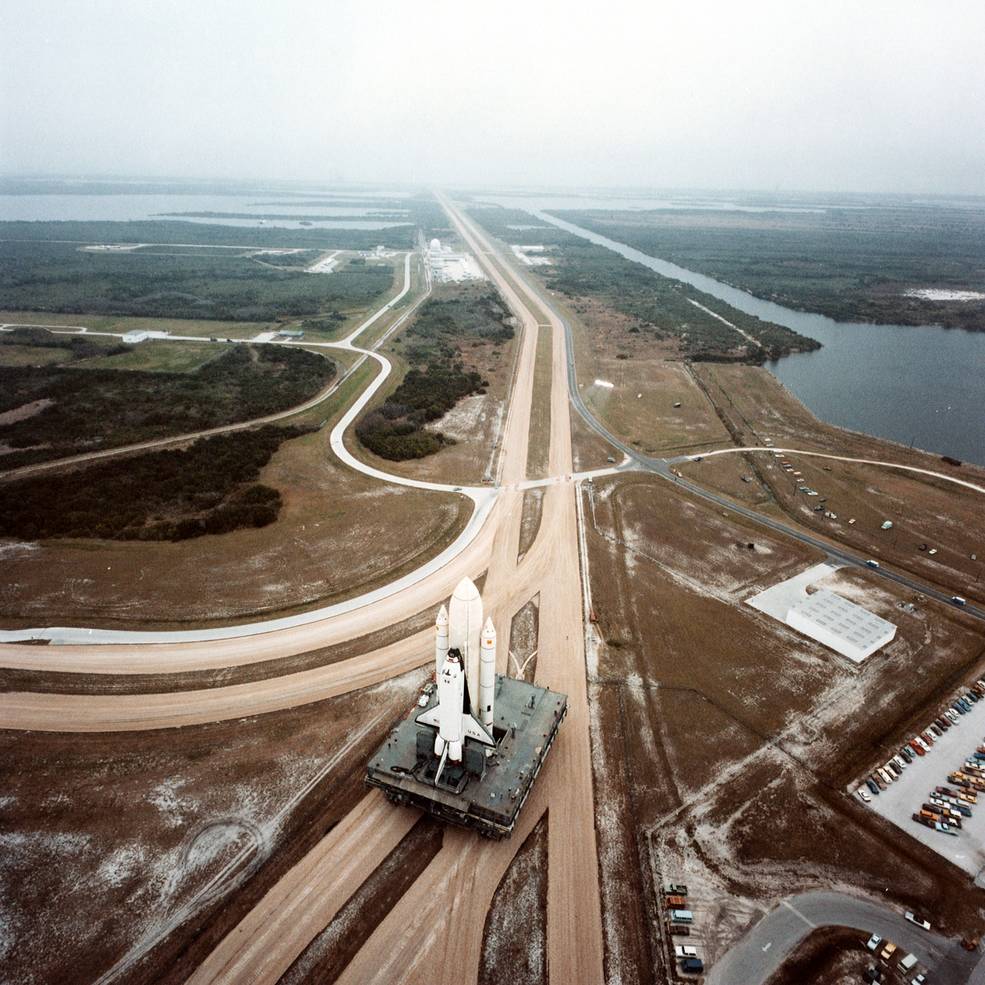
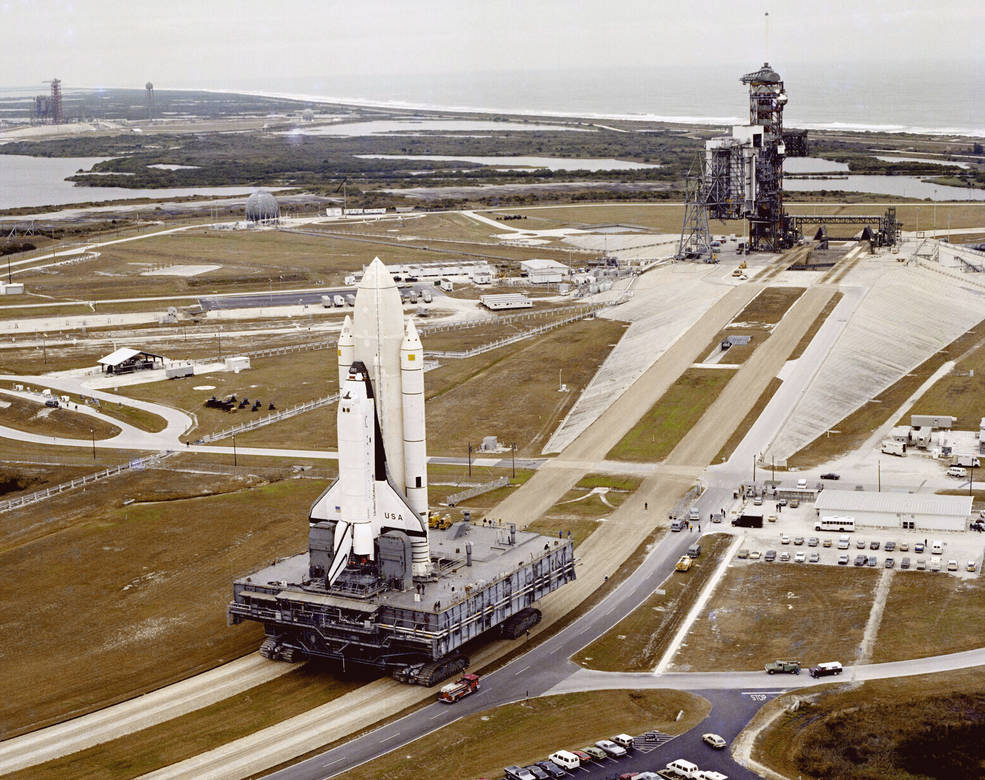
Left: View from the top of the Vehicle Assembly Building (VAB) at NASA’s Kennedy Space Center as space shuttle Columbia begins its journey to Launch Pad 39A. Middle: View from atop the VAB as Columbia begins the journey down the crawlerway. Right: Columbia approaches Launch Pad 39A.
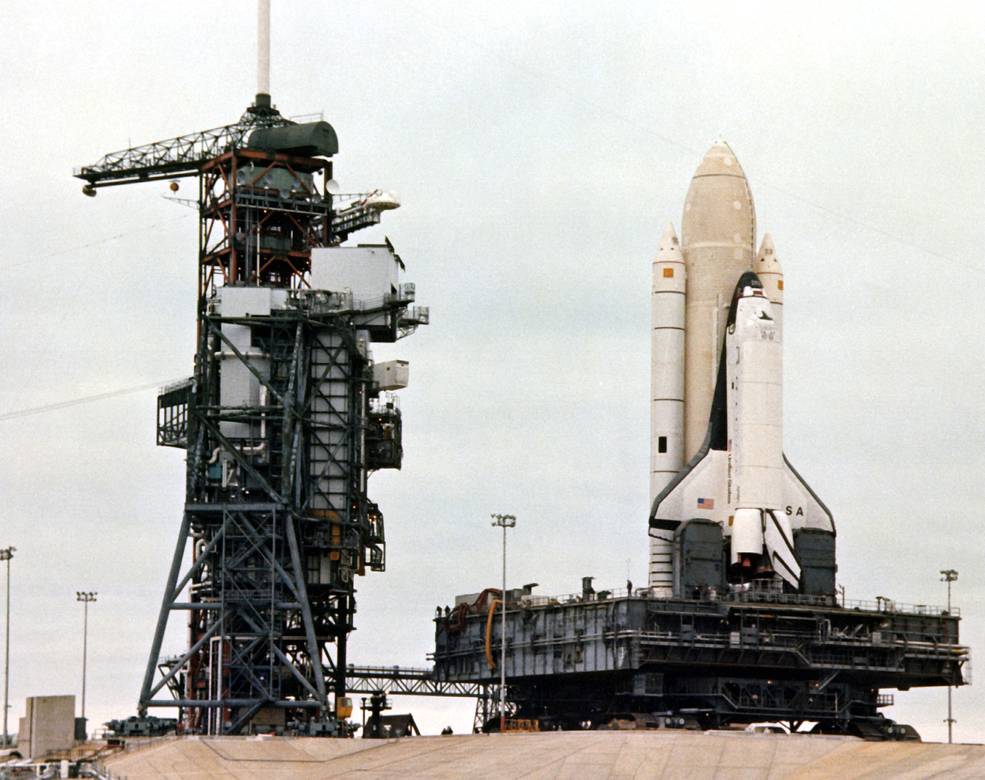
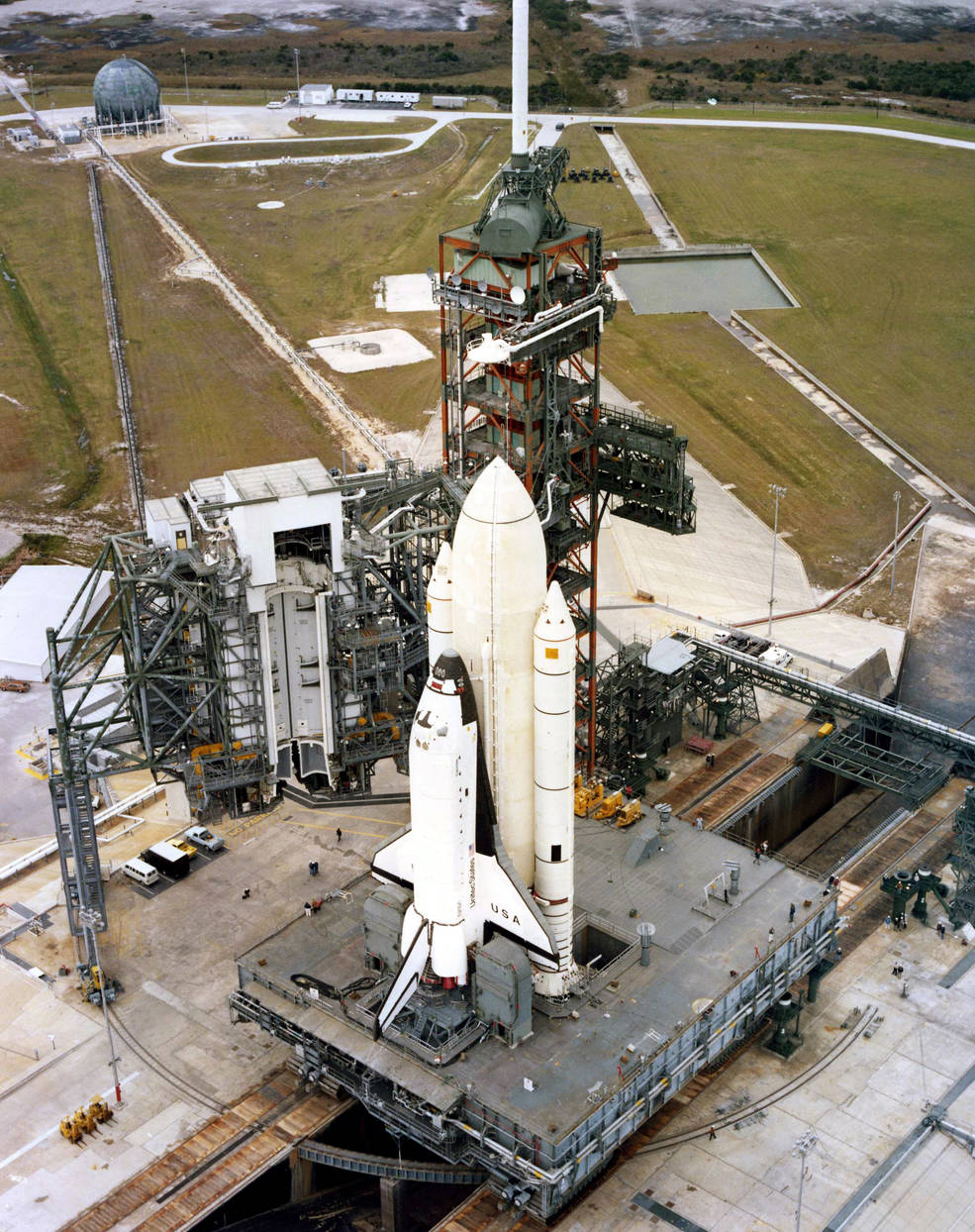
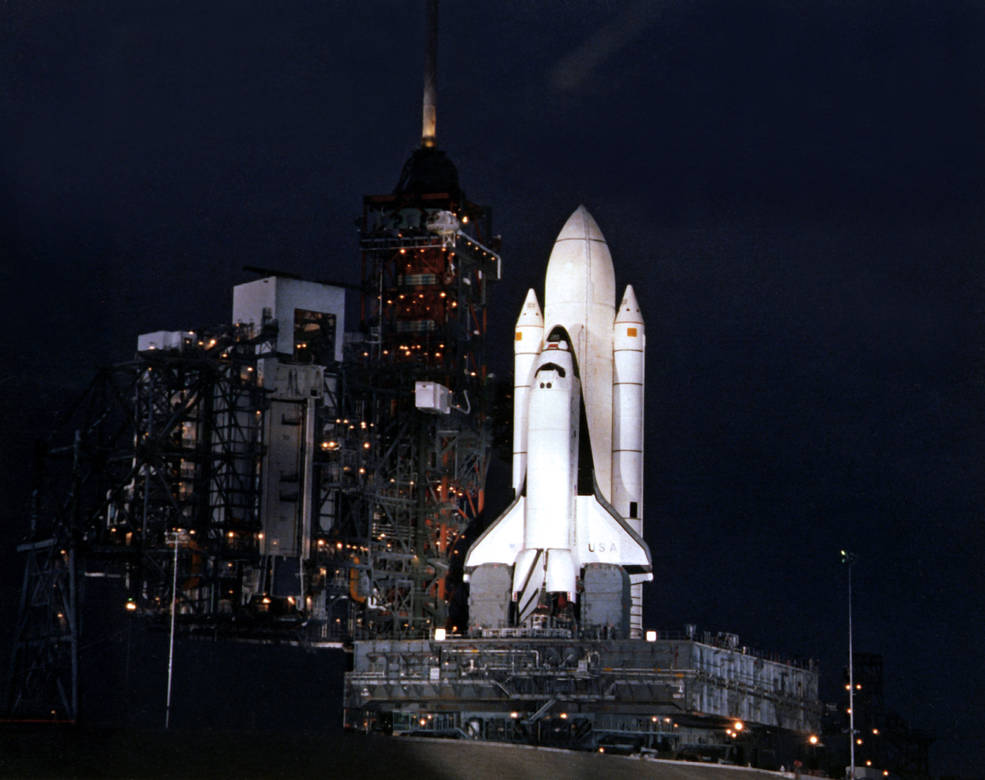
Left: Space shuttle Columbia arriving at Launch Pad 39A.
Middle: Columbia nearly in position at Launch Pad 39A.
Right: Columbia in place on Launch Pad 39A.
Once at the pad, workers began readying Columbia for its next major milestone, the Flight Readiness Firing (FRF), a 20-second final certification test of the orbiter’s main engines, on Feb. 20, 1981. Successful completion of the FRF allowed managers to more precisely schedule Columbia’s launch date. At the pad, crews moved the orbiter crew access arm into position, allowing astronauts and ground support personnel to enter the vehicle.
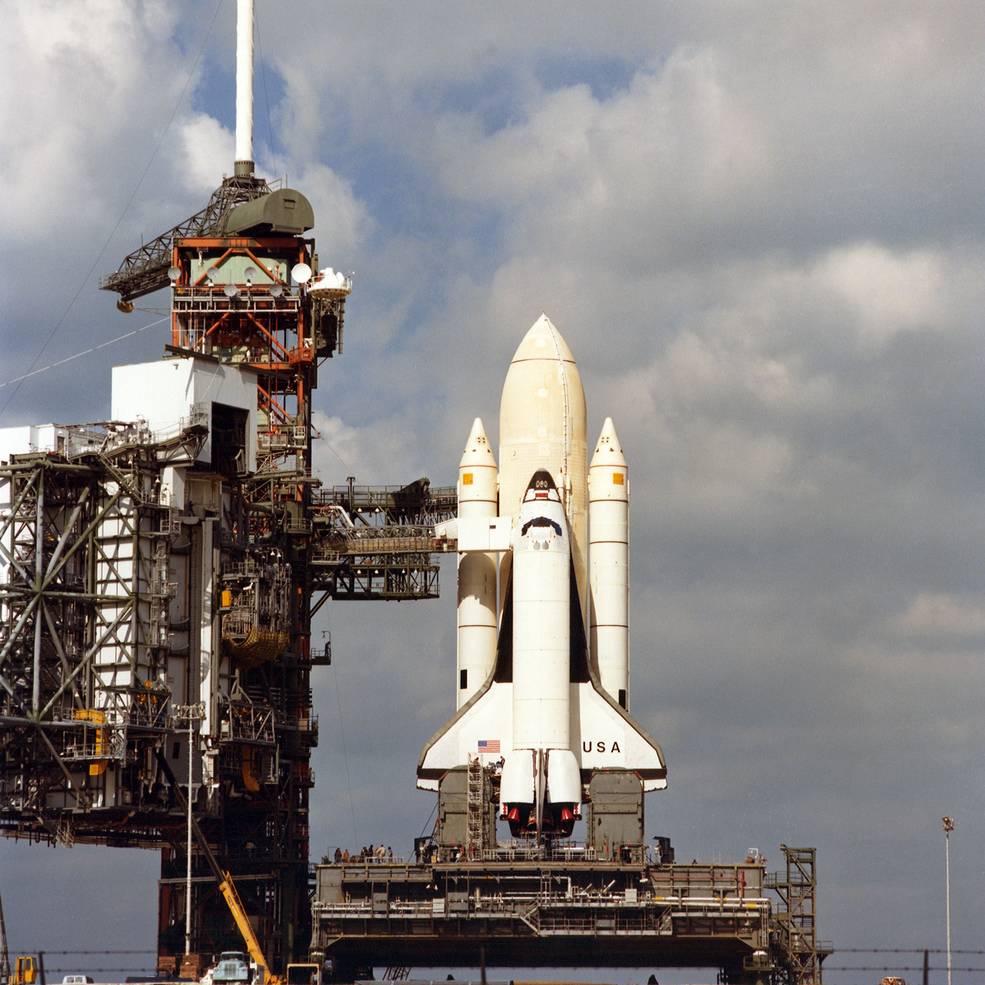
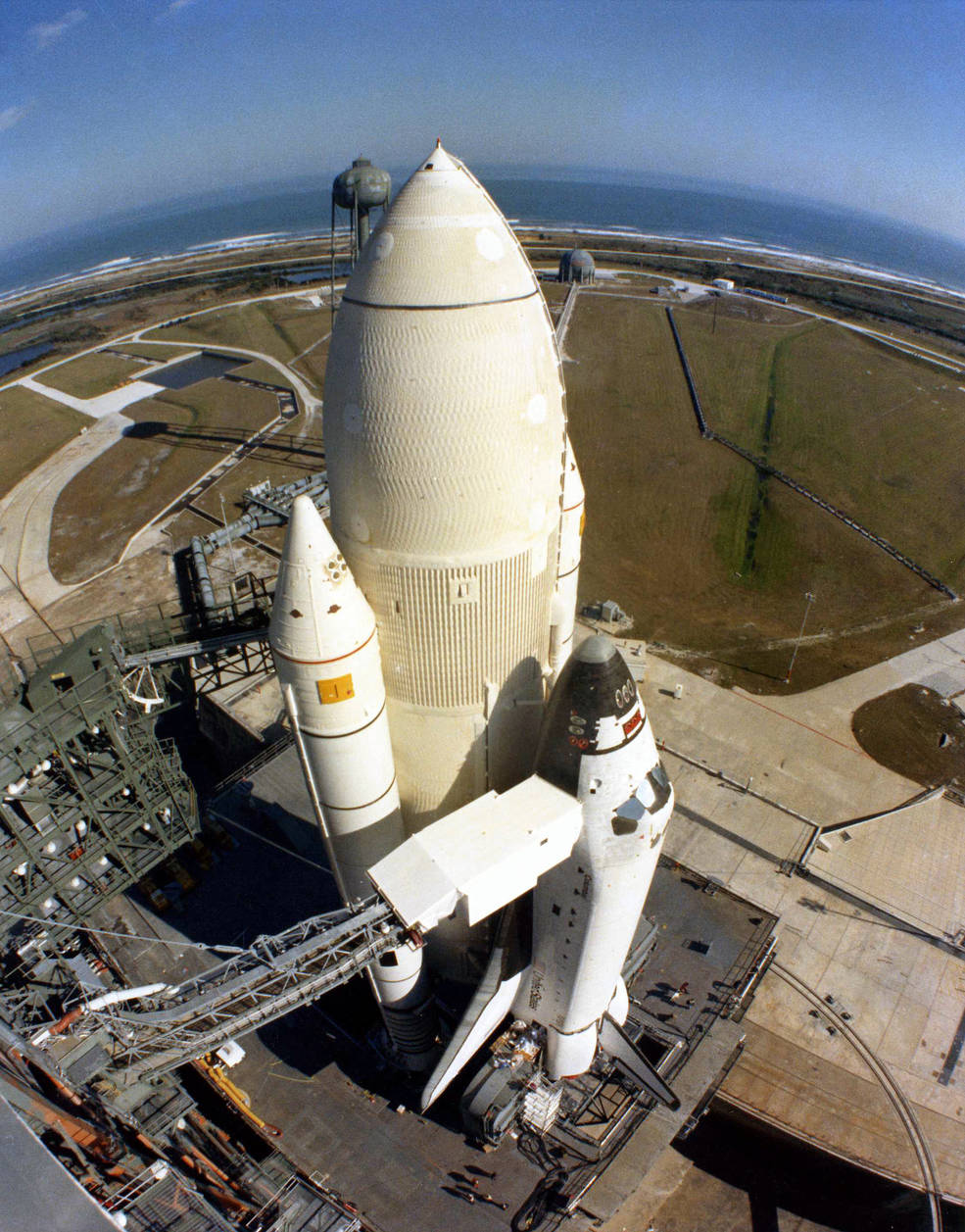
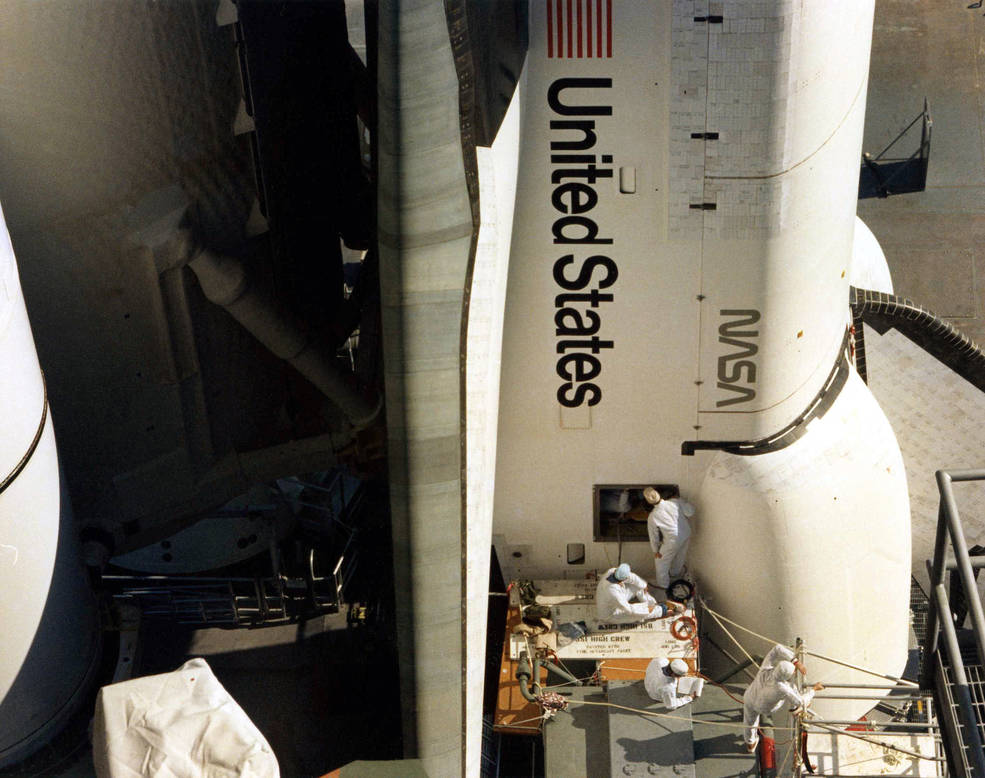
Left: Space shuttle Columbia at Launch Pad 39A with the orbiter crew access arm rotated into place. Middle: View from the launch tower of space shuttle Columbia at Launch Pad 39A showing the orbiter crew access arm. Right: Technicians install elements of Columbia’s avionics after the orbiter’s
arrival at Launch Pad 39A.
Six days into the new year of 1981, the STS-1 prime and backup crews received a demonstration of the crew emergency escape system at Launch Pad 39A. Commonly known as the slide wire, the system consisted of open baskets that pairs of astronauts and support personnel would use in case of an emergency requiring immediate evacuation from the crew access level of the launch tower, located 195 feet above the ground. The baskets with the personnel aboard would ride down to the ground on slide wires, a total distance of 1,200 feet, reaching speeds of up to 60 miles per hour. A system of cable brakes and netting slowed the basket to a stop at ground level. A nearby bunker would provide shelter for the personnel, who could also evacuate using armored personnel carriers. For this demonstration, the astronauts did not actually ride the baskets down the slide wire.
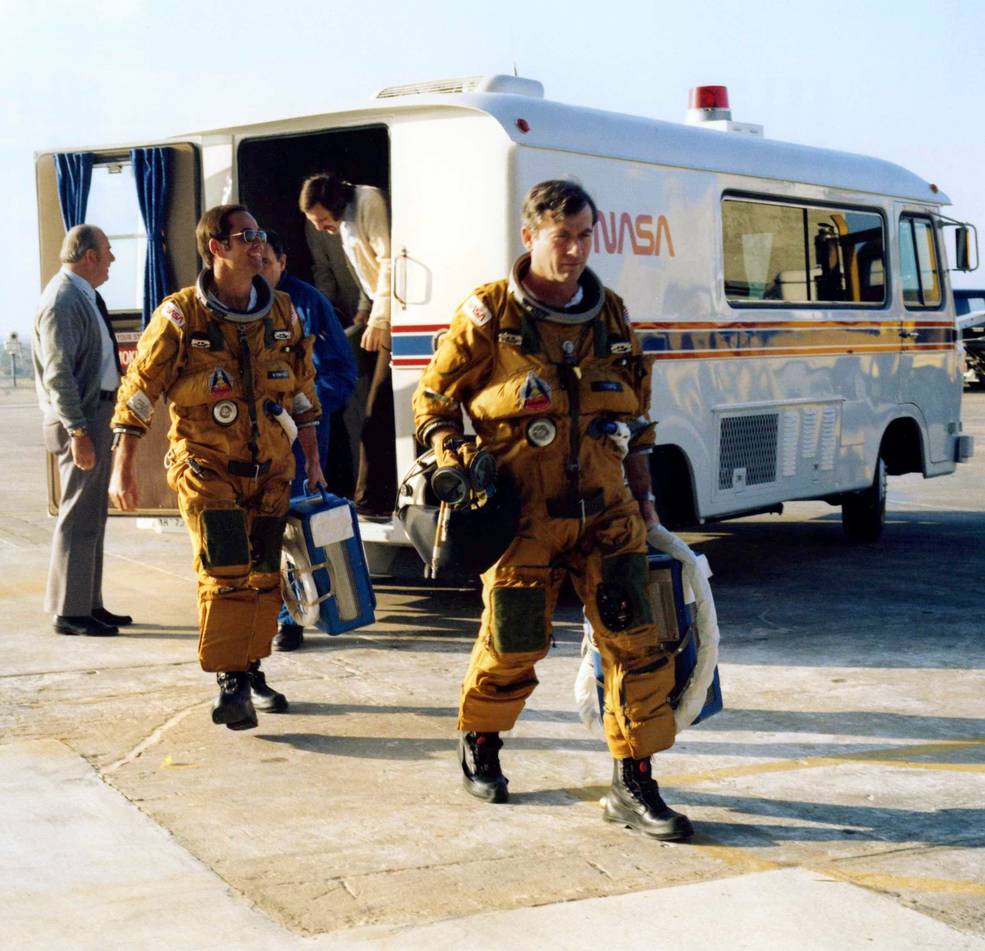
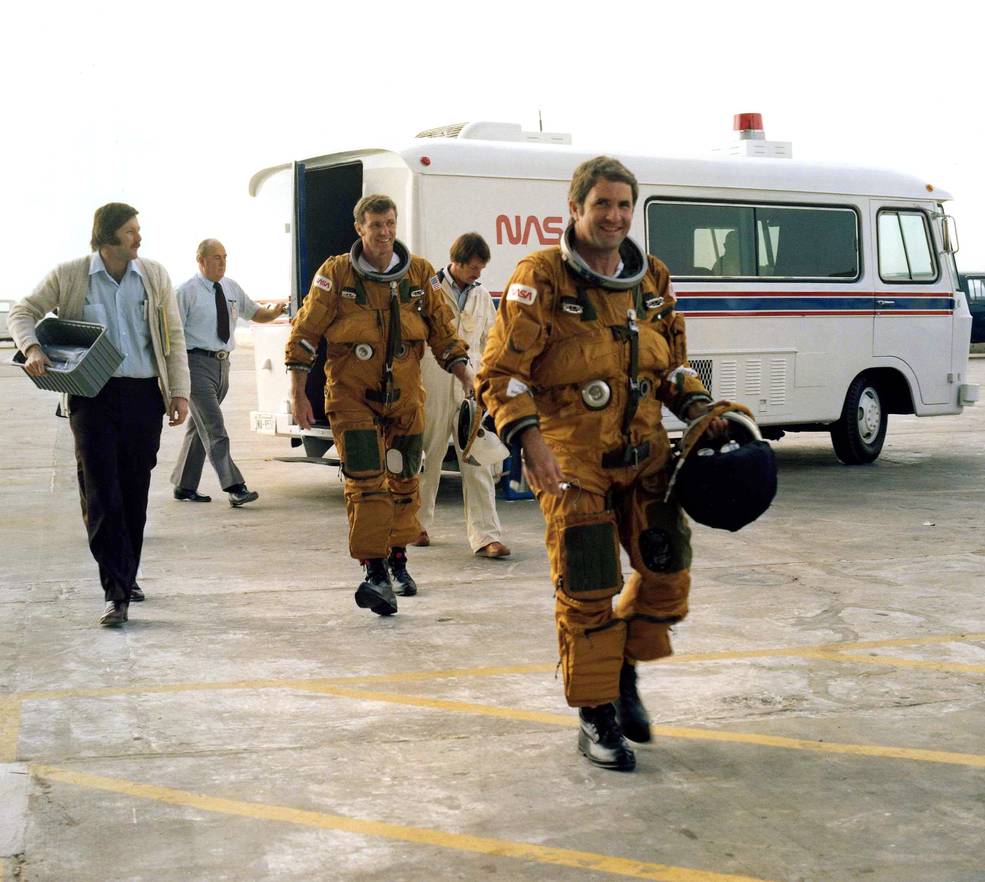
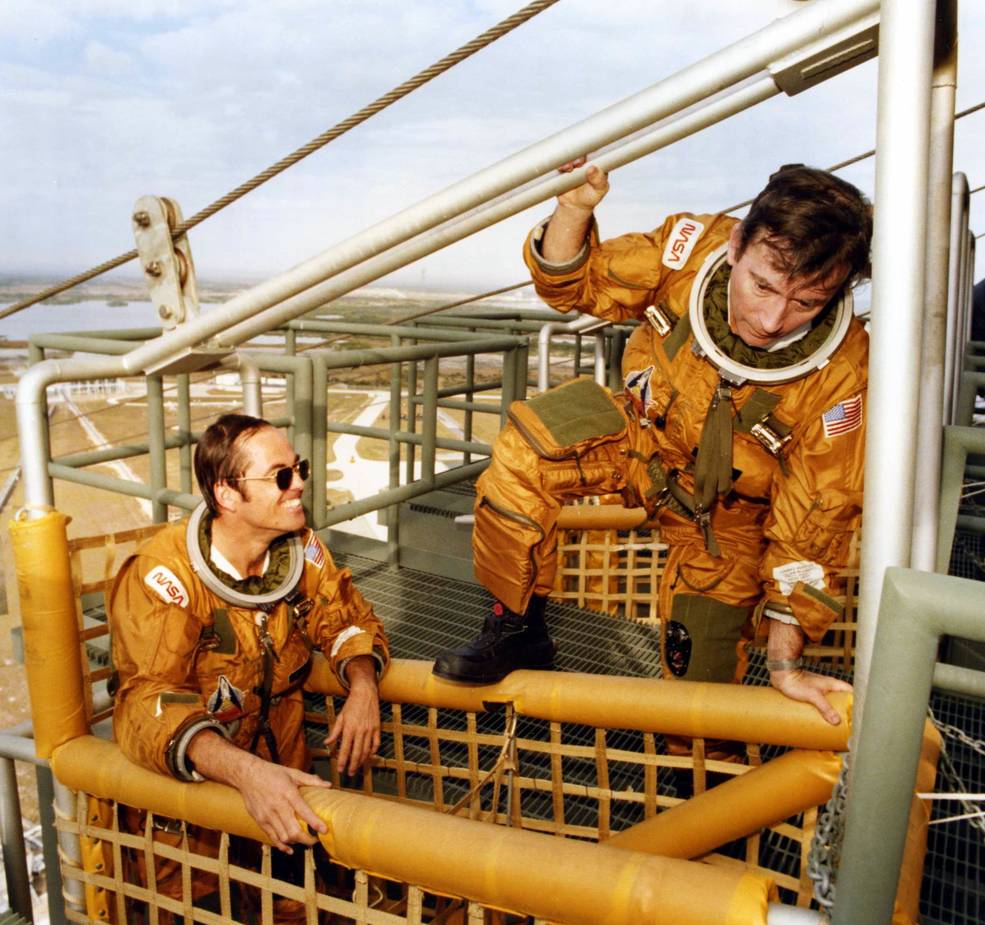
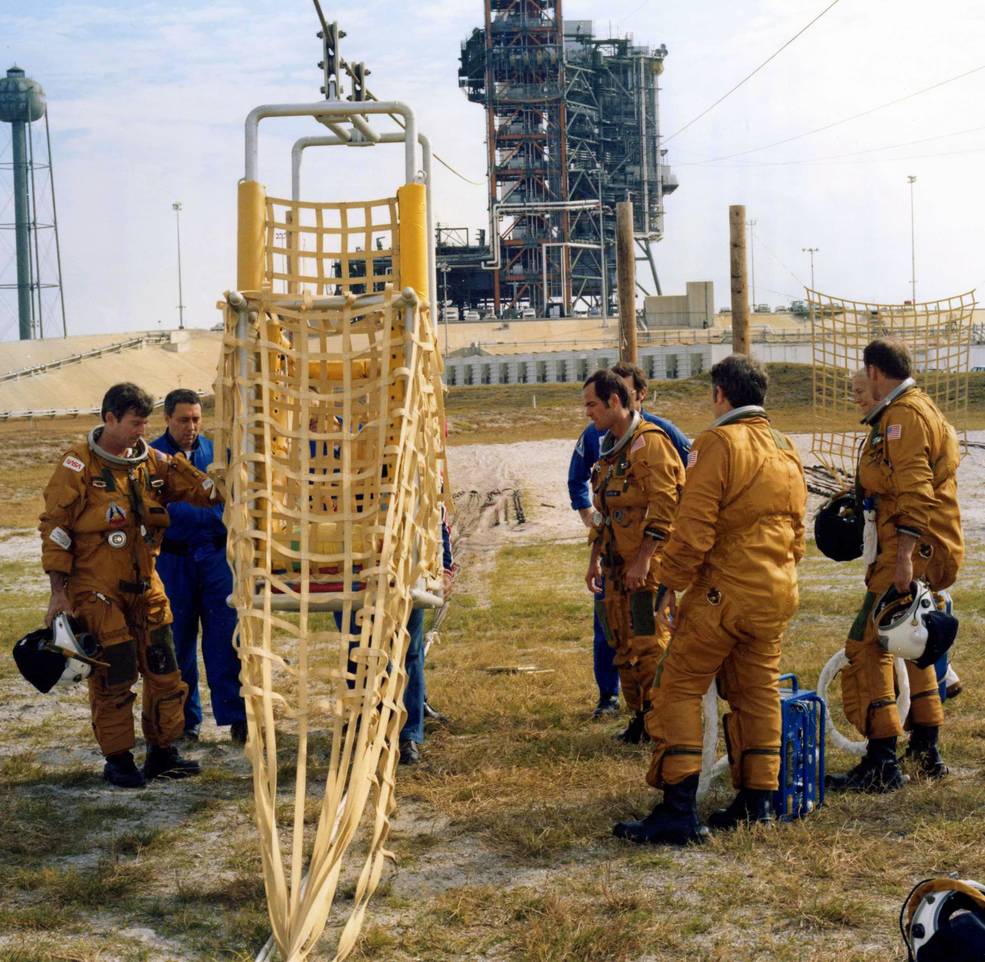
Left: STS-1 astronauts Robert L. Crippen, left, and John W. Young arrive at Launch Pad 39A for a demonstration of the crew emergency escape system. Middle left: STS-1 backup astronauts Joe H. Engle, left, and Richard H. Truly arrive at Launch Pad 39A for emergency egress training. Middle right: Crippen, left, and Young practice getting into the emergency slide baskets. Right: Young, left, Crippen, Truly, and Engle inspect the slidewire escape basket at the base of Launch Pad 39A.
To be continued…
Significant world events in December 1980:
December 4 – The rock band Led Zeppelin announces that it will disband, following the death of drummer John Bonham
December 8 – John Lennon is murdered in New York City
December 10 – Three-person Soyuz T3 crew returns to Earth after a 13-day flight to the Soviet Salyut-6 space station
December 11 – The United States Congress passes the Superfund Act
December 11 – “Magnum, P.I.,” starring Tom Selleck, premieres on CBS-TV
December 12 – Computer-maker Apple makes its initial public offering on the U.S. stock market
December 27 – Calvin Murphy of the Houston Rockets begins longest free throw streak (78) in the NBA
December 30 – Final performance of “The Wonderful World of Disney” on NBC-TV





























